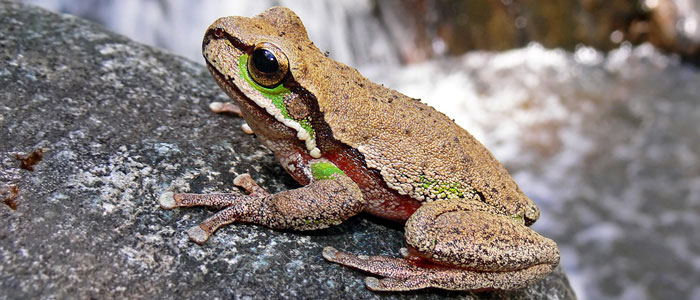
We’re more than halfway through Australia’s marathon federal election but yet to hear what the major parties will do to confront the environmental threats posed by invasive species. The silence is almost deafening.
Right now invasive species are the main threat facing Australia’s declining mammals, frogs and possibly its plants. So why aren’t politicians talking about them?
Perhaps they think dealing with weeds, pests and feral animals is a dead issue. Try telling that to the people battling yellow crazy ants in Queensland’s wet tropics, or the local landcare and coastcare groups right around the nation that give up countless weekends to battle environmental weeds.
The big issues
Our big election asks revolve around stopping dangerous new weeds, pests and feral animals from gaining a destructive foothold in Australia, but we also want to know how the major political parties plan to control established invasive species.
For example, what will they do if elected about keeping Australia free of acacia rust, a plant killing disease threatening Australia’s famous wattle family?
Will they ensure the federal government fully supports the eradication of both red fire ants and yellow crazy ants from Australia’s north before these highly invasive ants become unstoppable? Will they work harder to stop their regular arrival via our ports?
And what will they do about the propensity for collectors of exotic plants, fish and pets to recklessly bring into Australia or illegally keep and hide invasive species that could spread, taking over streams and bushland and pushing our native wildlife towards extinction, just like the fox and feral cat?
Some small steps
What have we heard so far? In May, the Coalition and Labor both announced that they would contribute at least half the funding needed for eradication of yellow crazy ants from the Wet Tropics near Cairns and Kuranda. But together with a 20% contribution from the Queensland Government that commitment still leaves the program short-changed.
The Coalition also committed to eradicating feral cats from five offshore islands, with $500,000 each allocated to Bruny and Kangaroo islands.
Election questionnaire
We have sent a 12-point questionnaire to all major political parties contesting the 2016 federal election. We will release the results before the final week of the election to give you time to see which party has a credible plan to reign in the growing impacts of invasive species on the environment.
Here are our questions aimed at determining which party will best try to stop new invasive species from arriving and spreading across Australia.
Would your party:
1. Implement all the unanimous recommendations of the 2015 Senate inquiry into environmental biosecurity.
2. Establish Environment Health Australia to improve environmental biosecurity preparedness, involve the community and identify research, surveillance and prevention priorities (modelled on the industry-government partnerships Plant Health Australia and Animal Health Australia).
3. Establish a permanent national research centre for prevention of environmentally invasive species, building on the successful weed and invasive animal cooperative research centre model and focusing on prevention, early action, and on the full range of invasive species – insects, weeds, plants, feral animals, pathogens and marine invaders.
4. Commit to a target of achieving a net reduction in the environmental impacts of invasive species within five years, conducting the necessary baseline assessment of impacts, methods and funding required, and production of a national plan to achieve the target.
5. Seek a CoAG agreement to legislate risk-based limits on the movement of invasive non-native (weedy) plants and if the states don’t agree within one year, create national regulation under the existing provisions of the EPBC Act.
6. Develop and implement a national plan to reduce the risks of environmental damage from both the legal and illegal keeping of exotic fish, birds, mammals, reptiles and amphibians.
7. Create an offshore islands eradication program to undertake high impact invasive species eradications and implement a national island biosecurity initiative to prevent new invasions of our offshore islands.
8. Establish a ‘Minister for Biosecurity’ to administer biosecurity laws and policies strongly and fairly across all sectors.
9. Initiate a Productivity Commission review of environmental biosecurity to determine the costs and benefits of improved biosecurity measures.
10. Establish world-leading national regulation of ballast water and biofouling, including mandatory domestic regulation, to protect the Great Barrier Reef and Australia’s whole marine environment.
11. Commit to providing adequate on-going funding, over the medium term and if needed the long term, for the containment and ultimate eradication of lethal red fire ants and poison-spraying yellow crazy ants from Australia.
12. Prepare a State of Biosecurity Report by the end of 2017 that objectively reports on Australia’s performance and state of preparedness to respond to high risk biosecurity threats facing the environment, agriculture and society.
Elections are about policies and priorities. We need a real contest when it comes to making a long-term difference to the environment and protecting Australia from invasive species.



